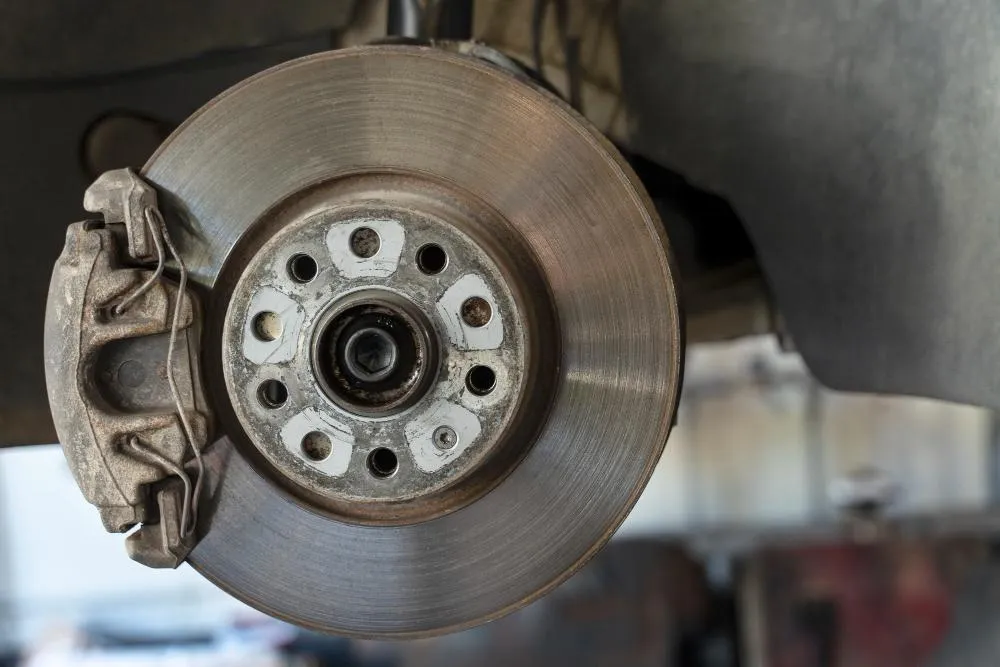
How to Choose the Right Brake Pads for Your Vehicle
Brakes are your car’s most important safety system. Whether you’re driving through Mississauga’s busy streets or stopping suddenly on the highway, your brake pads make all the difference in keeping you safe. But with so many types available—ceramic, semi-metallic, and organic—choosing the right brake pads can feel overwhelming.
The truth is, the “best” brake pad depends on your driving habits, vehicle type, and budget. In this guide, we’ll break down the different brake pad options, explain how they work, and help you decide which set is right for your car.
What Brake Pads Do and Why They Matter
Brake pads create friction against the brake rotors when you press the pedal, slowing and stopping your vehicle. Because they wear down over time, they must be replaced regularly.
The right brake pad will:
Provide reliable stopping power
Match your driving style and environment
Reduce wear on your rotors
Offer good value for cost and longevity
Using the wrong brake pads can lead to poor braking performance, faster wear, and even safety risks.
Types of Brake Pads Explained
Different vehicles and drivers need different brake pads. Here are the main types you’ll come across.
Semi-Metallic Brake Pads
Made with metals such as steel, copper, and iron.
Excellent stopping power, especially in cold weather.
Durable and long-lasting.
Tend to be noisier and can cause more wear on rotors.
Best for trucks, SUVs, or performance driving.
Ceramic Brake Pads
Made from ceramic compounds and copper fibers.
Quiet, clean, and produce less dust.
Last longer than most other types.
Handle high temperatures well without fading.
Typically more expensive than other pads.
Great for daily commuting and city driving.
Organic (Non-Asbestos Organic or NAO) Brake Pads
Made from natural materials such as rubber, glass, or Kevlar.
Quiet and affordable.
Softer, meaning less wear on rotors.
Wear out faster and may not perform as well under extreme braking.
Suitable for light-duty driving and smaller cars.
How to Choose the Right Brake Pads
When deciding which brake pads to install, keep these considerations in mind.
Step 1: Identify Your Driving Style
City driving: Ceramic pads are often ideal because they’re quiet and efficient for stop-and-go traffic.
Heavy-duty or towing: Semi-metallic pads provide the strength needed for heavier loads.
Light driving: Organic pads can be sufficient for short trips or occasional use.
Step 2: Consider Your Vehicle
Performance cars and trucks usually benefit from semi-metallic pads
Daily commuter cars often perform best with ceramic pads.
Compact cars can use organic pads if cost savings are a priority.
Step 3: Balance Cost and Longevity
Ceramic pads cost more upfront but last longer and keep wheels cleaner.
Semi-metallic pads are durable but can wear down rotors faster.
Organic pads are cheapest but require more frequent replacement.
Step 4: Get a Professional Opinion
Mechanics can check your braking system, driving conditions, and rotor health to recommend the most suitable option.
Frequently Asked Questions
How often should brake pads be replaced?
On average, brake pads last between 40,000 and 100,000 kilometers. This depends on driving habits, road conditions, and pad type.
Can I mix different types of brake pads?
It’s not recommended. Mixing pad types can cause uneven braking and reduce safety. Always install matching sets.
What are the signs my brake pads need replacing?
Squeaking noises, grinding sounds, longer stopping distances, or a brake warning light on your dashboard are all signs it’s time for replacement.
Are ceramic brake pads worth the extra cost?
Yes, for most daily drivers. They’re quiet, clean, and long-lasting, making them a good long-term investment.
Do new brake pads need a break-in period?
Yes. Properly bedding in new brake pads helps them seat against the rotors for maximum performance and longevity.
Conclusion
Choosing the right brake pads isn’t just about price—it’s about matching your driving style, vehicle needs, and safety priorities. Ceramic, semi-metallic, and organic pads all have their advantages, but the best choice is the one that balances performance, cost, and durability for your situation.
For Mississauga drivers, replacing brake pads at the right time and selecting the right type ensures safe, confident driving in every condition.